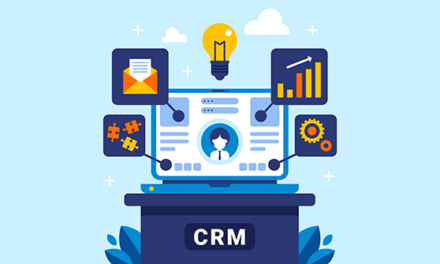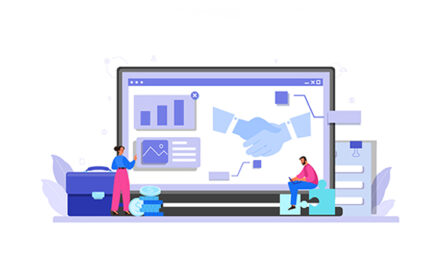Key Takeaways
- Customer segmentation is essential to any successful marketing strategy for consulting businesses.
- There are various customer segmentation models, including demographic, geographic, psychographic, technographic, firmographic, needs-based, and value-based segmentation.
- Businesses should specify their objectives and goals, collect and analyze customer data, identify and evaluate customer groups, develop and implement targeted marketing strategies, and continuously assess and improve their plan to construct a customer segmentation strategy.
- Effective customer segmentation can help consulting businesses tailor their services to meet the unique needs of each customer segment, improve customer satisfaction, increase revenue, and gain a competitive advantage.
Are you looking to supercharge your consulting business and provide an exceptional customer experience?
Customer segmentation models and strategies are the secret sauce to achieving just that!
Understanding your customers’ specific requirements and preferences is essential to distinguishing in today’s cutthroat marketplace.
By breaking down your customer base into distinct groups with shared characteristics, you can tailor your services to deliver an experience that leaves them wanting more.
But with different segmentation approaches available, from demographic to behavioral to psychographic, it can be overwhelming to know where to start.
This article will deeply dive into customer segmentation and explore the best strategies and models for consulting businesses.
Whether you’re looking to improve customer satisfaction, increase revenue, or enhance your customer experience, we’ve covered you with practical tips and real-world examples.
So, get ready to revolutionize your consulting business and exceed your clients’ expectations with the power of customer segmentation.
What is a customer segmentation model?
A customer segmentation model is a framework that consulting businesses can use to divide their customers into smaller groups based on specific characteristics. These models help companies better understand their customers and create targeted marketing campaigns.
The goal of segmentation is better to understand the needs and preferences of each group, allowing you to tailor your products, services, and marketing efforts to meet their unique needs.
Benefits of a customer segmentation model

More targeted marketing efforts
By dividing your customer base into groups with similar characteristics, you can tailor your marketing efforts to each group’s specific needs and preferences.
It ensures that your marketing messages are more relevant and resonates better with your target audience, resulting in a higher response rate and improved conversion rates.
Improved customer satisfaction and retention
When you understand your customers’ unique needs and preferences, you can create a more personalized customer experience that meets their specific needs.
It can improve customer satisfaction and loyalty, as customers feel valued and appreciated. In addition, satisfied and loyal customers are more likely to tell other people about your business, which can bring in more customers and increase your profits.
Increased revenue and profitability
Creating a more personalized and effective customer experience can increase customer satisfaction, loyalty, and retention, leading to higher revenue and profitability for your business.
Targeted marketing efforts also lead to better conversion rates and higher sales, further boosting your bottom line.
Enhanced product/service offerings
Understanding your customers’ needs and preferences can help you develop new products and services that meet their needs.
By tailoring your offerings to each customer segment, you can differentiate yourself from the competition and provide a unique value proposition that attracts and retains customers.
Improved resource allocation and efficiency
You can optimize your resource allocation and improve efficiency by focusing your resources on the most profitable customer segments.
It allows you to allocate your resources where they are most needed, ensuring that you provide the highest level of service to your customers while maximizing your return on investment.
Types of Customer Segmentations

Demographic segmentation
In the consulting business, demographic segmentation can be a valuable for understanding different customer segments’ specific needs and preferences.
By using demographic factors such as age, gender, income, education, and location, consulting firms can gain insights into the unique characteristics of different customer groups.
For instance, a consulting firm specializing in marketing, such as a Digital Marketing Agency, may use demographic segmentation to create customized marketing campaigns for their clients.
By understanding the specific preferences and behaviors of different customer segments, the consulting firm can tailor their marketing messages to be more effective and targeted.
Behavioral segmentation
Behavioral segmentation can be a valuable strategy for targeting clients based on their past behavior and specific needs.
For example, a consulting firm might use behavioral segmentation to identify clients who frequently request certain types of consulting services, such as financial planning or human resources consulting.
By identifying these patterns in client behavior, the consulting firm can create targeted marketing campaigns that highlight their expertise in these areas and provide specialized services to meet these specific needs.
Additionally, by focusing on these high-demand areas, the consulting firm can increase its profitability and build a reputation as an expert.
Psychographic segmentation
Psychographic segmentation enables consulting firms to identify and target clients with specific values, beliefs, and personality traits.
By understanding different client groups’ unique needs and motivations, consulting firms can create tailored services and marketing campaigns that resonate with these clients.
For example, a sustainability consulting firm might use psychographic segmentation to target clients who value sustainability in their business practices.
Similarly, a leadership development firm might use psychographic segmentation to identify highly motivated and ambitious clients who value continuous learning and personal development.
Geographic segmentation
Geographic segmentation is a valuable strategy for consulting businesses to identify and target clients in specific regions or countries.
By tailoring services and marketing campaigns to meet clients’ specific needs in different geographic locations, consulting firms can provide more effective and targeted services.
For example, a consulting firm specializing in disaster response and recovery might use geographic segmentation to target clients in areas prone to natural disasters.
Overall, geographic segmentation enables consulting firms to understand better the unique challenges and opportunities of different geographic locations and to provide more personalized services to help their clients achieve their goals.
Technographic segmentation
Consulting firms can use technographic segmentation to tailor their services and marketing campaigns to meet clients’ specific needs with unique technological capabilities.
For example, a consulting firm specializing in cybersecurity might use technographic segmentation to target clients who use specific software or hardware that are particularly vulnerable to cyber-attacks.
Consulting firms can provide more effective and targeted services by understanding the unique technological capabilities and needs of different client groups.
It can also help identify opportunities for new services or products that address specific technological needs or challenges.
Firmographic segmentation
Firmographic segmentation is a valuable strategy for consulting businesses to target clients based on their business characteristics, such as industry, size, or revenue.
Consulting firms can provide more effective and targeted services by tailoring services and marketing campaigns to meet clients’ specific needs in different industries or with varying business models.
For example, a consulting firm specializing in healthcare might use firmographic segmentation to target clients in the healthcare industry.
It also enables consulting firms better to understand the unique challenges and opportunities of different businesses and to provide more personalized services to help their clients achieve their goals.
Needs-based segmentation
Consulting firms can use needs-based segmentation to customize their services and marketing initiatives to meet various organizations’ unique challenges and opportunities.
For instance, a marketing consulting firm may target clients struggling with their marketing efforts, while a supply chain management consulting firm may target clients in need of supply chain optimization.
It allows consulting firms to provide more effective and personalized services to help their clients achieve their goals.
Value-based segmentation
Value-based segmentation in consulting involves targeting clients based on their perceived value of the consulting services being offered.
It means targeting clients who prioritize high-quality services or are willing to pay a premium for specialized consulting services that can provide them with unique competitive advantages.
For instance, a consulting firm specializing in sustainability may target clients who value sustainability and social responsibility and are willing to invest in these areas.
It allows consulting firms to effectively target clients willing to pay for the level of service they provide. In addition, it can help establish its brand as a premium provider of consulting services.
How to create a customer segmentation strategy for consulting business?
Creating a customer segmentation strategy is crucial for consulting businesses looking to optimize their marketing efforts and maximize revenue. Below are the five steps involved in creating a customer segmentation strategy:
1. Define your business objectives and goals
Defining your business objectives and goals is crucial in creating an effective customer segmentation strategy for your consulting business.
By clarifying your goal, you can identify which customer segments will be most valuable to target.
For instance, if your goal is to increase revenue, you should focus on high-value customer segments. Conversely, you may target segments with high churn rates or low satisfaction scores to improve customer satisfaction.
Understanding your business objectives and goals will help you tailor your segmentation approach to meet your specific needs and achieve your desired outcomes.
2. Gather and analyze customer data
In the consulting business, gathering and analyzing customer data can help identify patterns and trends in clients’ needs, preferences, and behavior. This information can be used to group clients into segments based on similarities, such as common challenges or business goals.
Consultants can gather customer data from various sources, including client surveys, website analytics, and social media engagement. Analyzing this data can provide insights into which services are in demand, which clients are the most profitable, and which segments may need more attention or targeted marketing efforts.
By gathering and analyzing customer data, consultants can make informed decisions about how to best serve their clients and grow their business.
3. Identify and evaluate customer segments
Based on your gathered data, you can identify different customer segments and evaluate their value to your business.
By grouping customers based on their needs, preferences, or behavior, you can better understand their specific requirements and tailor your services accordingly.
For example, you might identify a segment of clients who require a high level of technical expertise while another segment values speed and efficiency.
By evaluating the value of each segment to your business, you can prioritize which segments to target and allocate resources accordingly. It helps improve customer satisfaction, increase revenue, and drive business growth.
4. Develop and implement targeted marketing strategies
Once you’ve identified your customer segments, you can develop targeted marketing strategies to reach each group more effectively. It involves creating personalized messaging, using specific channels to reach each segment, or offering customized services to meet their needs.
For example, you may create a marketing campaign highlighting your expertise in a particular industry to attract clients. Alternatively, you may use different channels to reach different segments, such as social media for younger and traditional print media for older clients.
Additionally, you may offer customized consulting services to meet each customer segment’s specific needs, such as virtual consulting services for remote clients or in-person consulting for local clients.
5. Continuously evaluate and refine your strategy
Customer segmentation is an ongoing process, and continuously evaluating and refining your strategy over time is essential. It involves updating your data analysis techniques, adjusting your segmentation criteria, or refining your marketing tactics based on customer feedback.
Monitoring market trends, industry developments, and emerging technologies that could impact your business or customers is also important.
By continuously evaluating and refining your strategy, you can ensure that you deliver maximum value to your customers and drive business growth.
Conclusion
In conclusion, customer segmentation is vital to any successful consulting business strategy.
Using suitable segmentation models and strategies, you can identify and target different customer groups more effectively, creating personalized solutions that meet their unique needs and driving growth for your business.
Remember to define your business objectives, gather and analyze customer data, identify and evaluate customer segments, develop targeted marketing strategies, and continuously assess and refine your strategy over time.
By following these steps and staying attuned to the needs and preferences of your customers, you can build a thriving consulting business that delivers value to your clients and drives long-term success.




